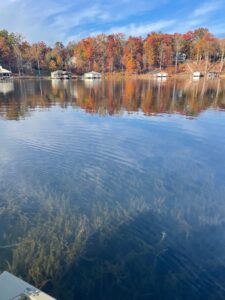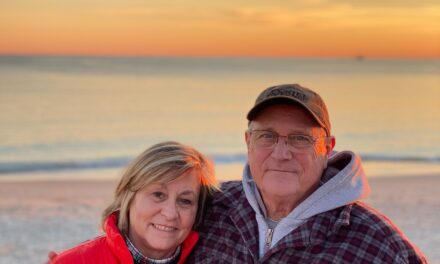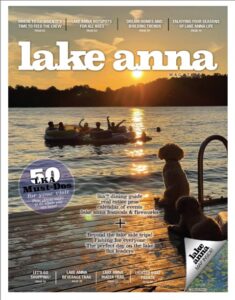
LAAC Anticipating Significant Hydrilla In 2023
The re-emergence and spread of the submerged aquatic weed hydrilla in Lake Anna has drawn the attention of the Lake Anna Advisory Committee, the group tasked with management of said weed.
The Lake Anna Advisory Committee’s Water Quality and Environmental Subcommittee met with members of the Virginia Department of Wildlife Resources and Dominion Energy on January 8 at the Dominion Energy Visitor Center to review 2021-2022 Hydrilla Management Plan actions and discuss plans for 2023.
Attending were John Casale of the LAAC subcommittee; Devan Payne, Danny Bryant, and Sarah Marshall of Dominion Energy; and Mike Isel and John Odenkirk of VDWR.
The major focus of the annual discussions revolved around the reemergence of hydrilla in the Freshwater Creek area, Tara Shores area, as well as multiple areas of Contrary Creek.
Isel and Odenkirk (VDWR biologists) suggested adding approximately 200 sterile grass carp to Freshwater Creek in April to control hydrilla in the Contrary Creek area. It was decided by all that this would be the best course for the Contrary Creek area as opposed to the use of herbicide at this time.
Sampling revealed the Freshwater Creek area of the lake had significant hydrilla in 2022, estimated at approximately 15 acres. It was decided to add a herbicide treatment in early August, instead of late August/early September as in previous applications. It was also decided to treat the Tara shores hydrilla (estimated to be approximately 10 aces) in early August. It is estimated that the total costs (carp and herbicide) will approach $17,320.
LAAC will contract with a licensed aquatic herbicide applicator to arrange for the treatment. Casale also agreed to apply for the needed sterile grass carp stocking permit from VDWR.
LAAC subcommittee members will monitor the affected areas using Downscan Sonar, beginning in early June to determine hydrilla development and a treatment protocol for the addition of grass carp and a second treatment protocol for herbicide application will be submitted to Dominion Energy at least three weeks prior to each application.
LAAC has been monitoring and managing hydrilla in the lake since the first aquatic herbicide application in 2019. The goal is not to eradicate hydrilla but to manage it as submerged aquatic weeds benefits include a filtering of the lake’s excessive nutrients that lead to algae blooms. Hydrilla and other aquatic vegetation filters sediments and offers habitat for juvenile fish and countless macroinvertebrates that make up the basis of the food chain in the lake.
“Striking the balance with hydrilla is a difficult task. I feel confident that heeding the advice of our friends at DWR is the right course of treatment here,” said LAAC Chairman C.C. McCotter.
























